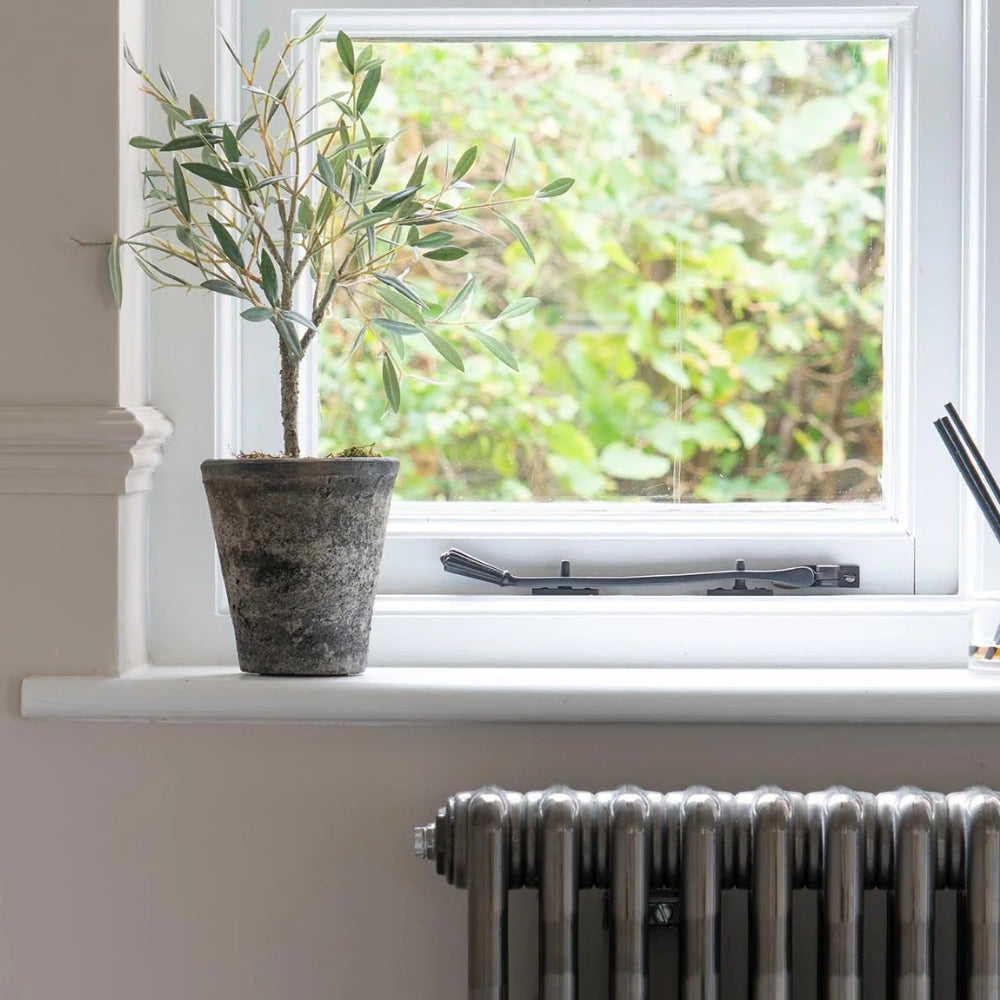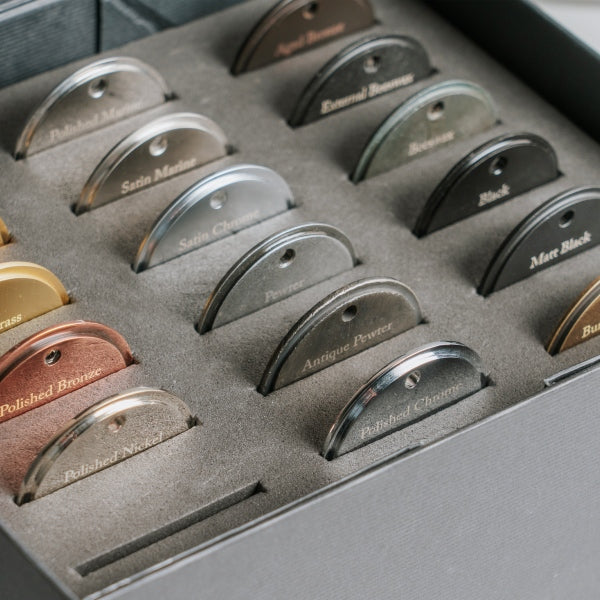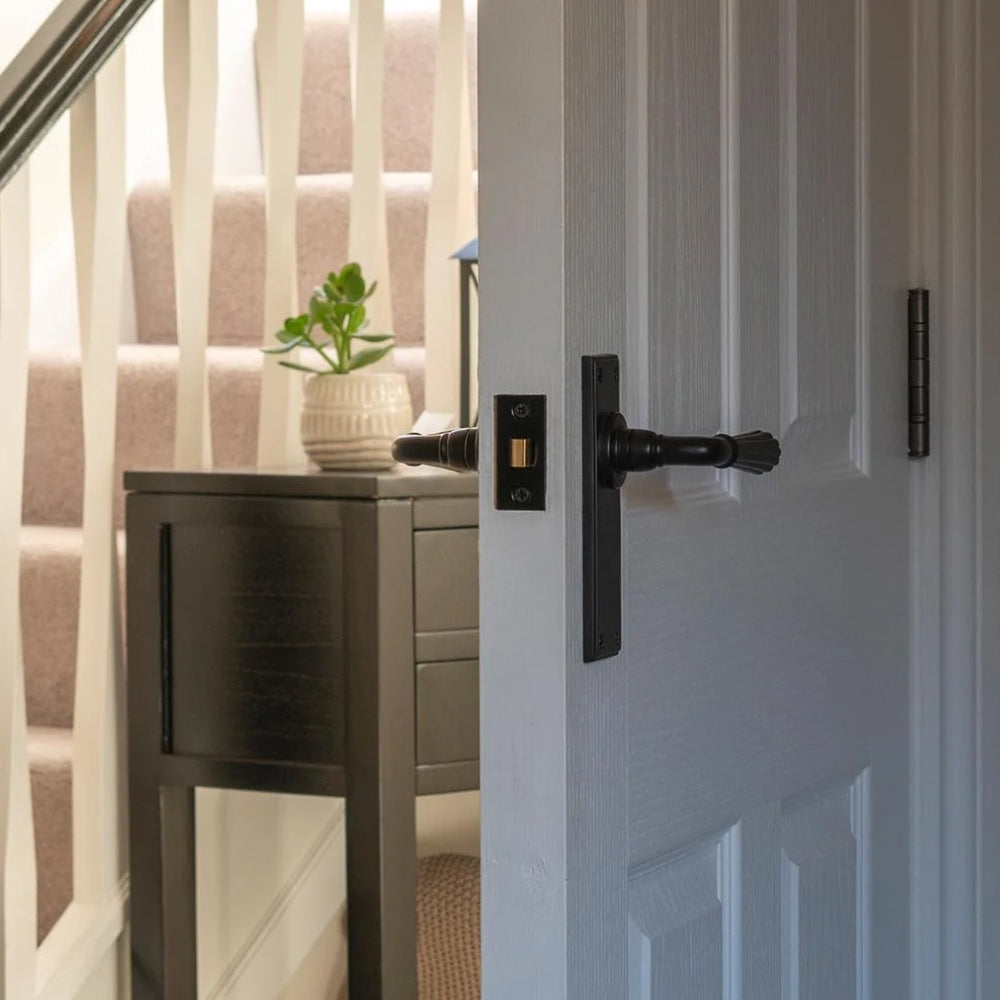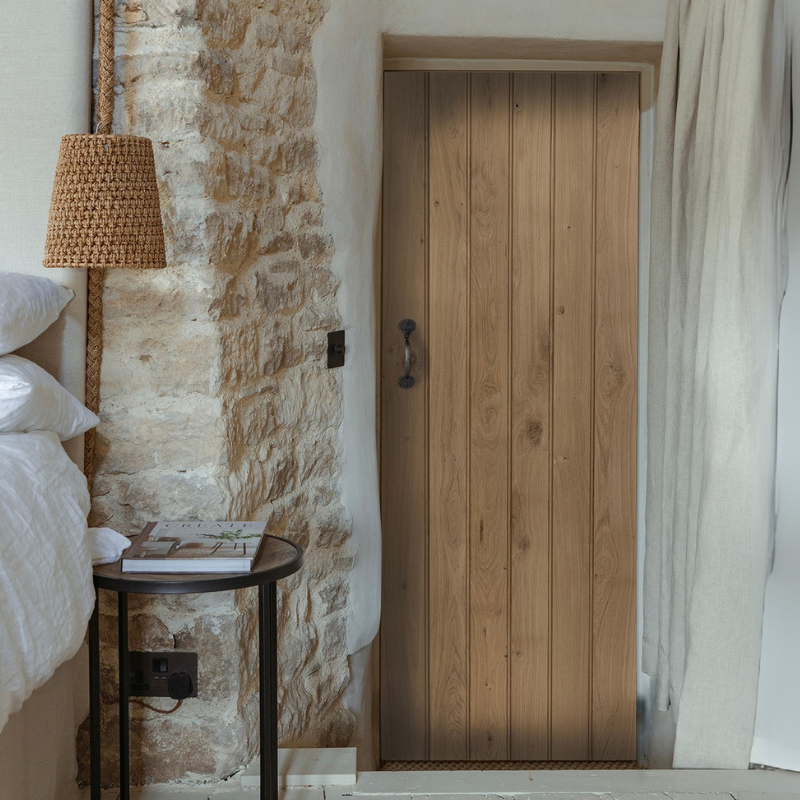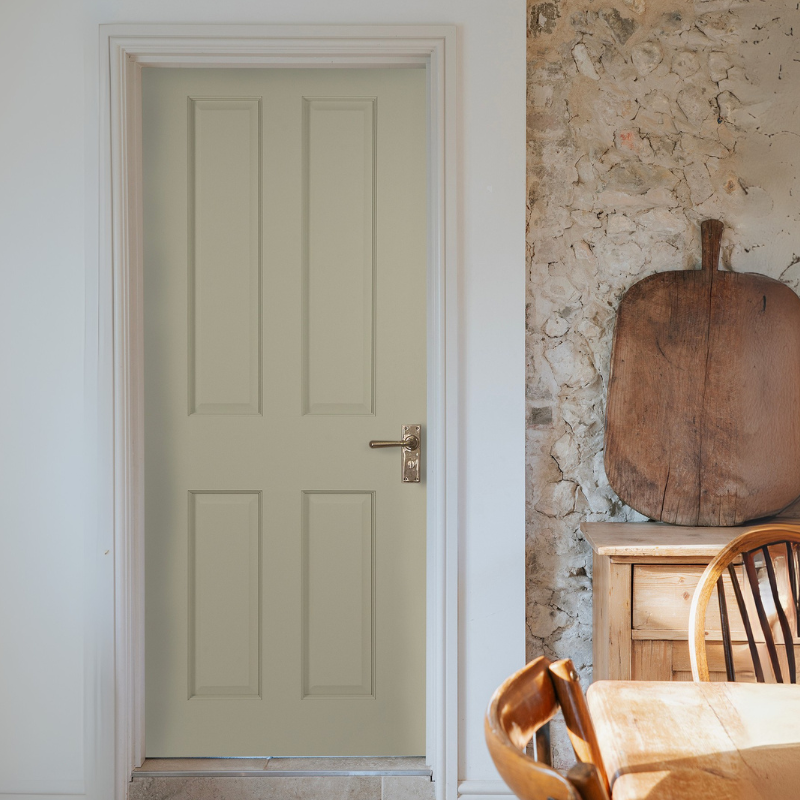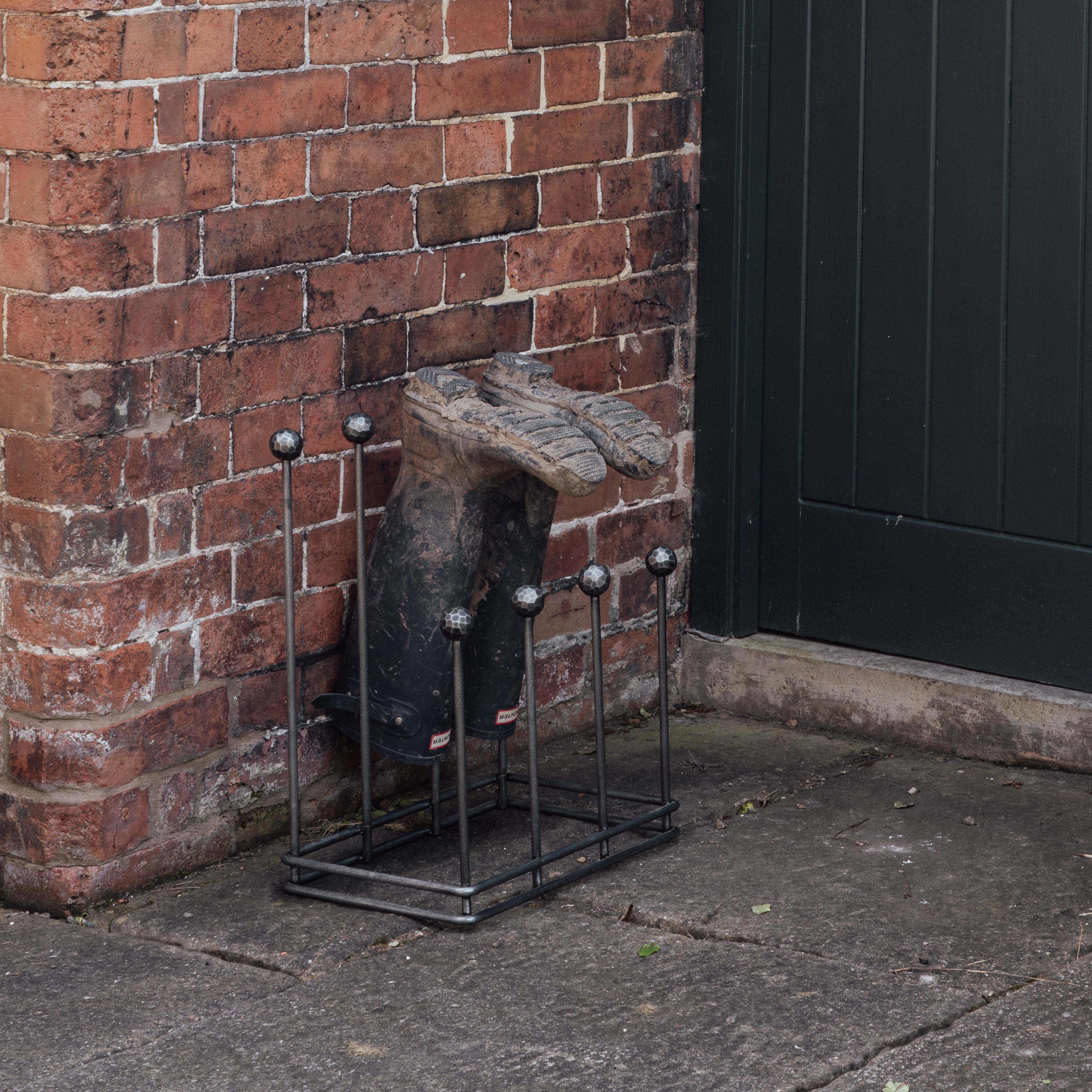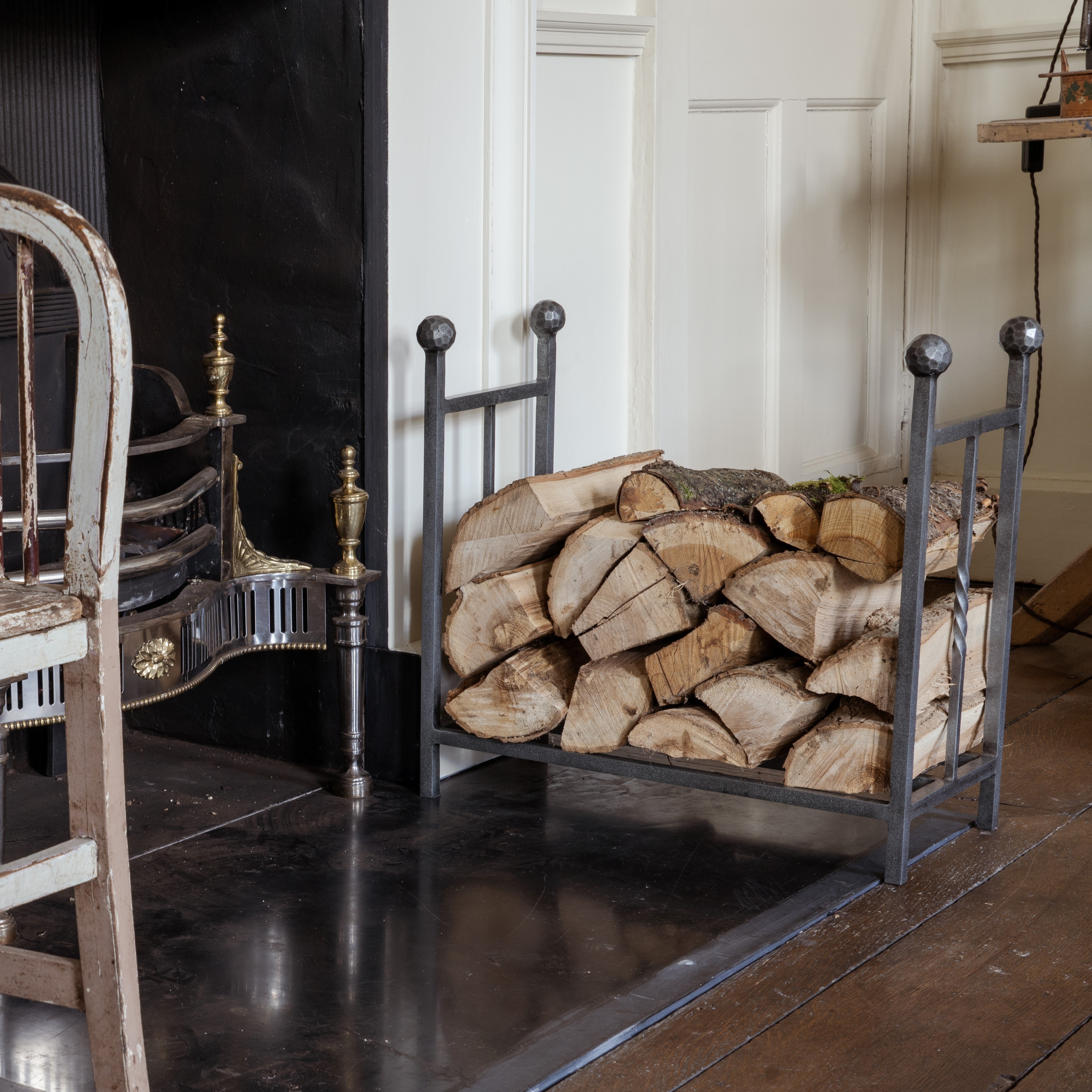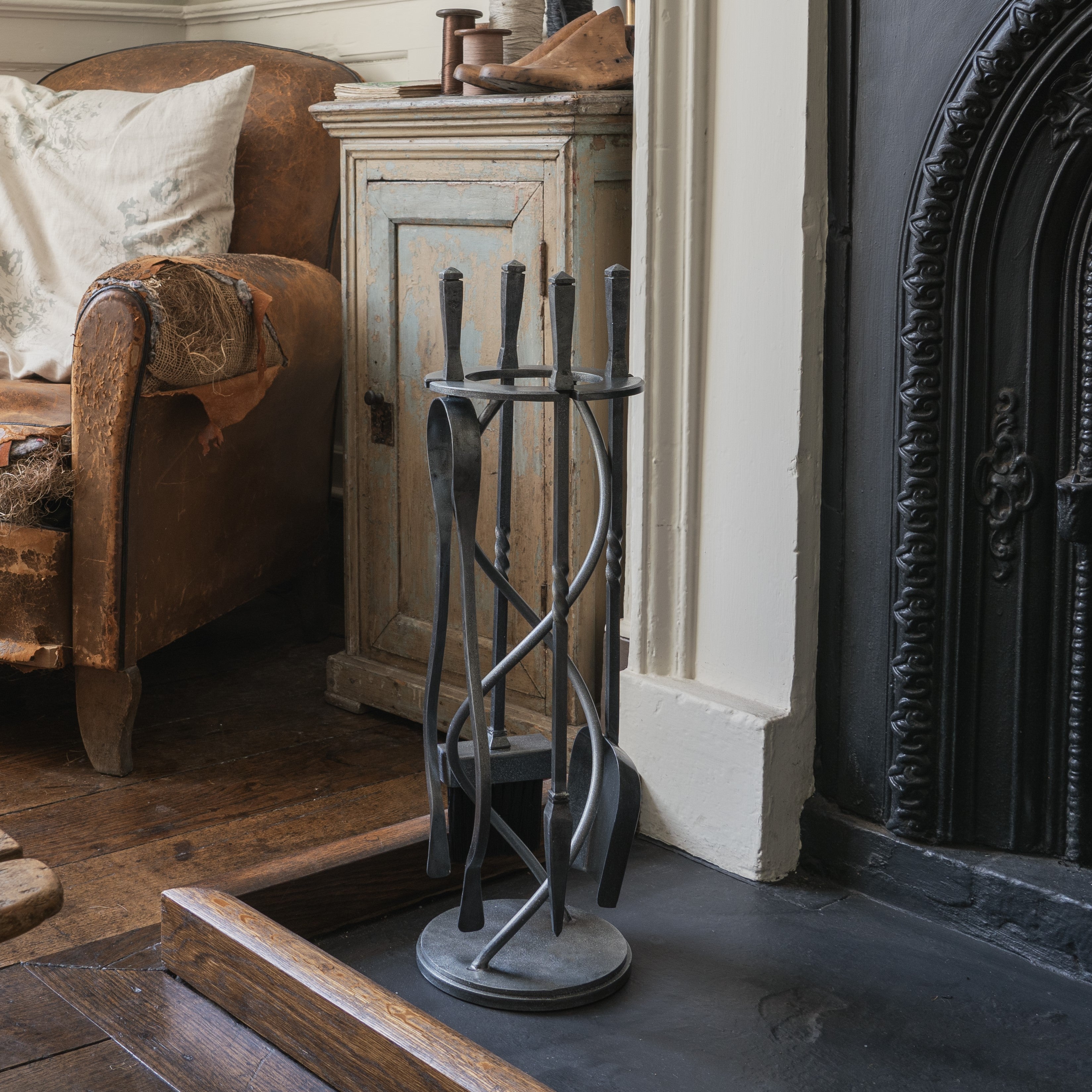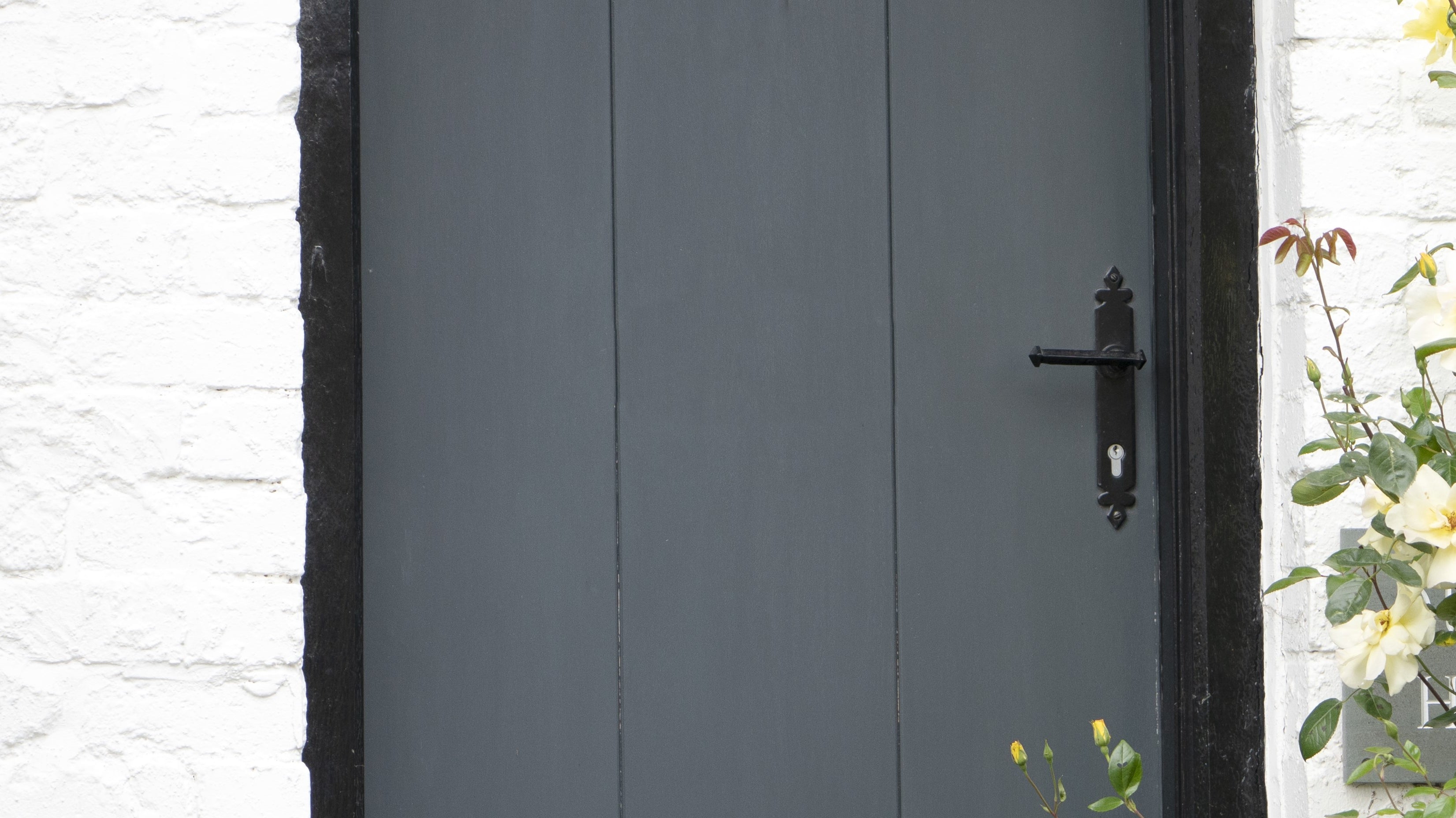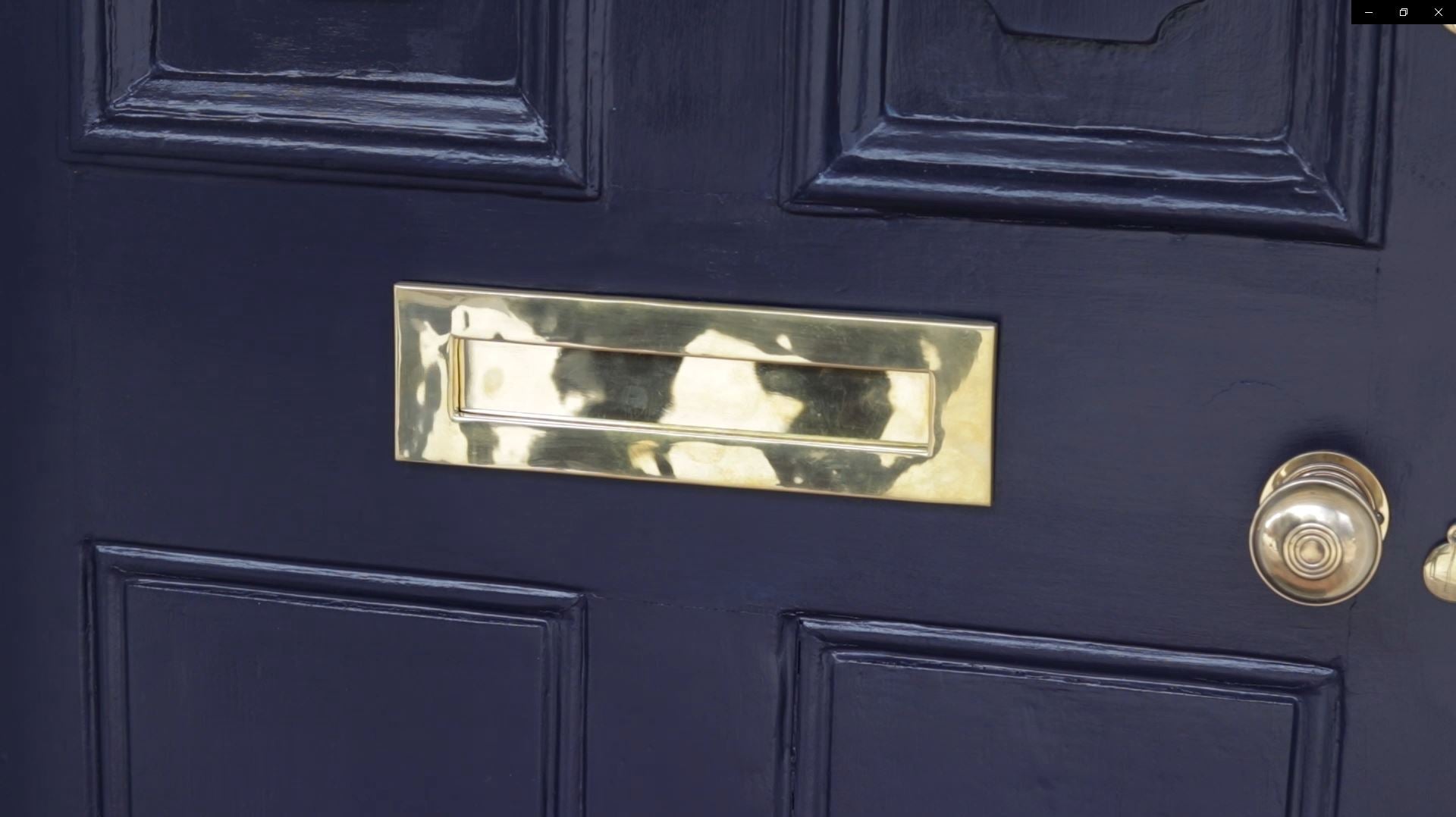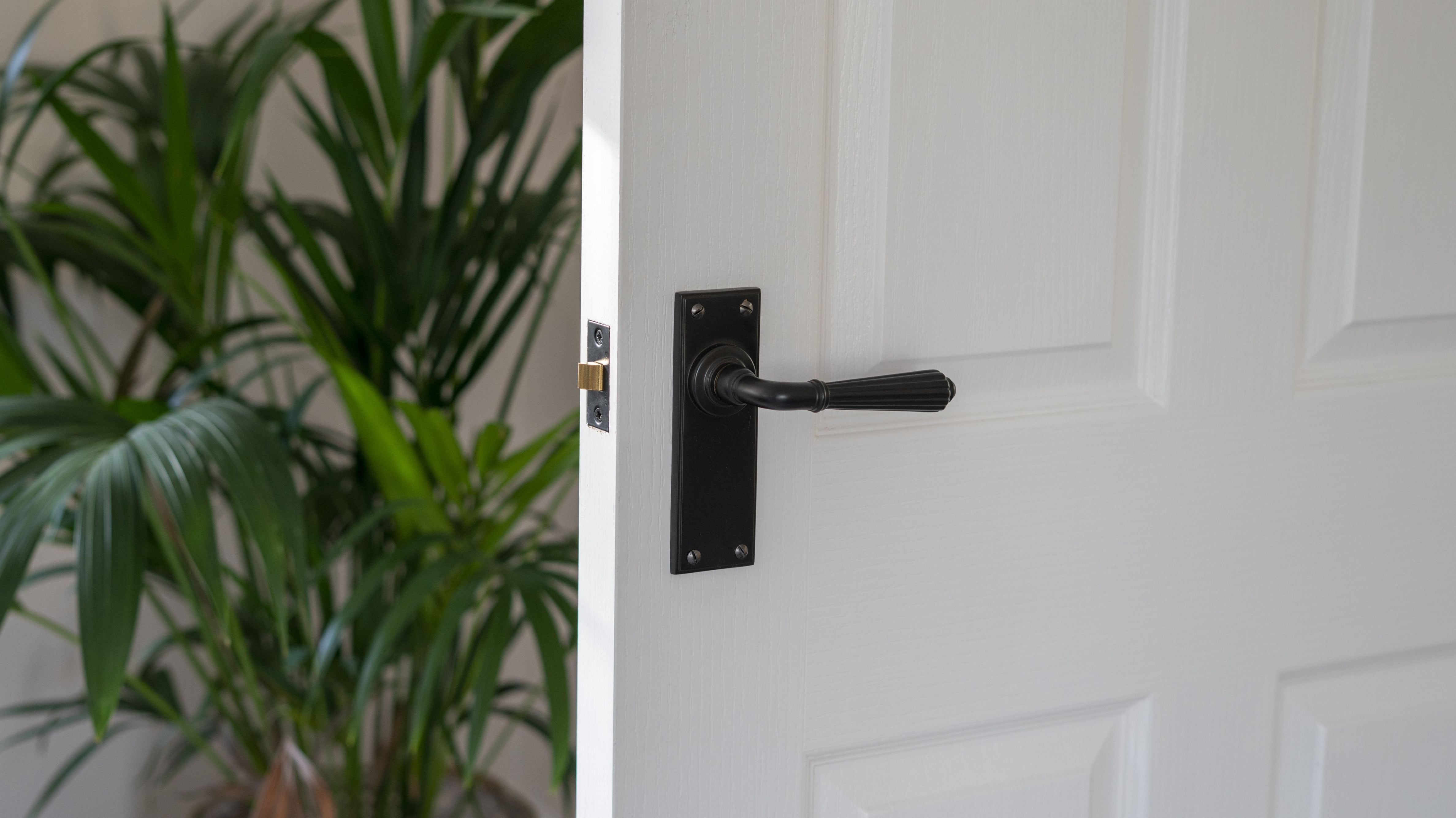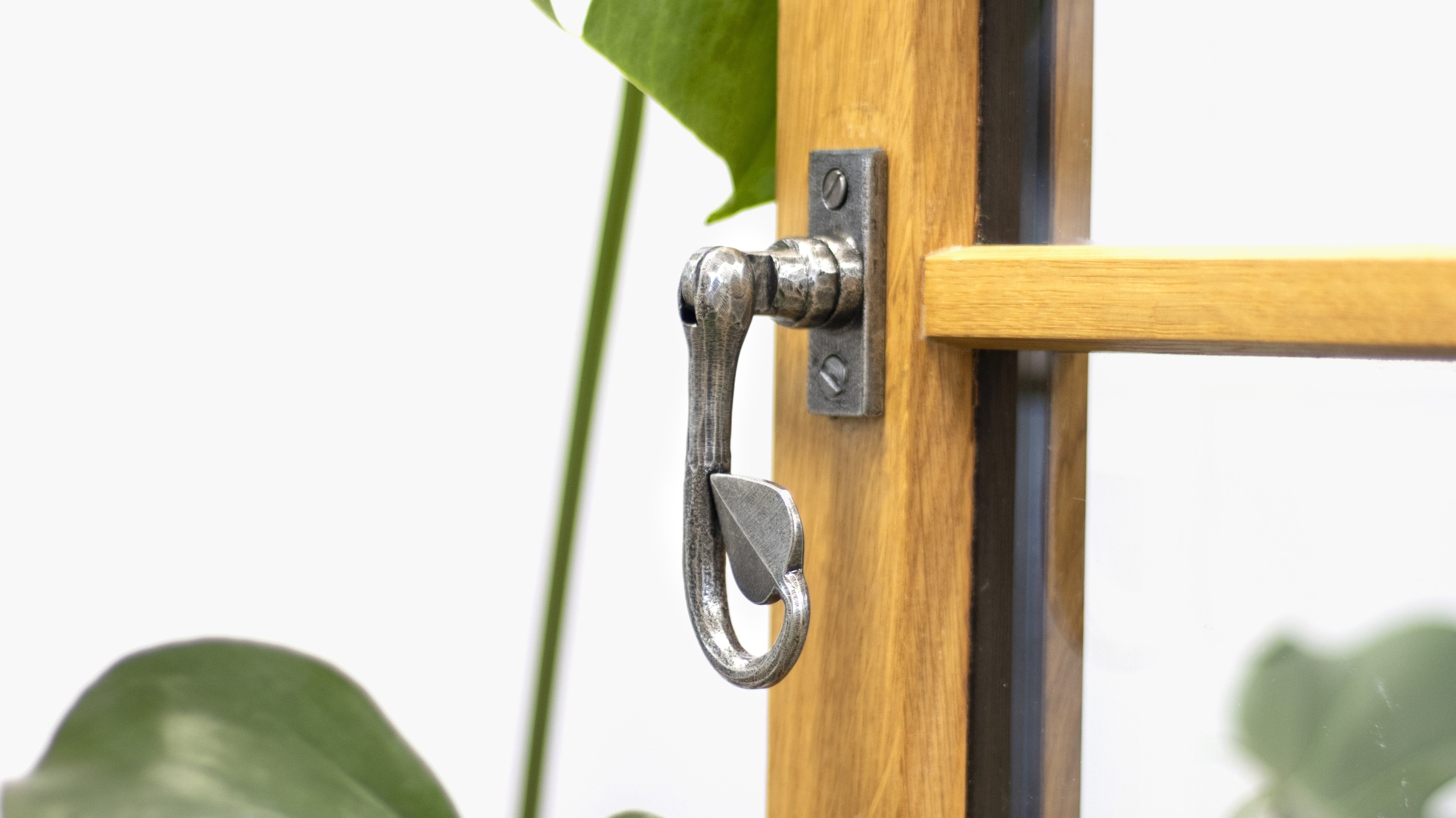Learn how to fit a concealed thumbturn to a door for use with lever on rose door handles or door knob sets. Thumbturns enable easy locking from one side of the door without the need for a key, and can be opened from the opposite side during an emergency by operating a coin-and-release mechanism.
Please note that this fitting guide is written on the assumption that a lock which is compatible with this escutcheon (with a 5mm follower hole) has already been fitted to the door.
Both wood screws and bolt-through fixings (male & female bolts) are provided with our concealed escutcheons. Where possible, we recommend fitting your escutcheon using the bolt-through fixings for the most secure fit.
Contents
- Pass the spindle through the door
- Attach the thumbturn
- Mark your screwholes
- Drill holes
- Cut your bolts (if required)
- Place your thumbturn
- Attach the rose
1. Pass the spindle through the door
Firstly, pass the spindle through the follower hole in your door, with the coin release attached.

2. Attach the thumbturn
Attach the thumbturn onto the spindle on the other side of the door.
If the spindle is too long, use a tape measure to measure the gap and use a hacksaw to cut off the excess spindle length.

3. Mark your screwholes
Position the backplate of the thumbturn so that the fixing holes are at North, East, South, and West Points. Once in position, use a pencil to mark the position of the screwholes on the door.
It's important to mark these points accurately to enable the bolt-through fixings to pass through in a later stage.
Once your holes are marked, you can remove the thumbturn from the door.

4. Drill holes
If you're using male and female bolts, drill holes large enough to allow M4 screws to pass all the way through the door.
If you're using wood screws, don't drill your holes all the way through the door - only pilot holes are needed for these.

5. Cut your bolts (if required)
If you're using male and female bolts, you may find that they're too long for the thickness of your door.
If this is the case, position your bolts along the edge of the door and compare the length of the bolt to the door thickness. Remember to take the thickness of the thumbturn's backplate into consideration too, as the bolt needs to be long enough to accomodate this.
Cut off any excess length of bolt with a hacksaw.
Your choice of latch or lock will determine how many bolts you may be able to use. Fit wood screws in all other instances.

6. Place your thumbturn
Place your thumbturn onto the spindle and align with the previously drilled screw holes. Feed the male bolt through and connect the female bolt to the other side. Repeat for all bolts, evenly tightening them with a hand-held screwdriver.
If you're unable to use bolts, use wood screws instead to secure the backplate to your door.
When all the bolts/screws are secured, use an Allen key to tighten the grub screw on the thumbturn and check all fixings are secure. The thumbturn should now function as expected.

7. Attach the rose
Round Roses
Place the outer rose gently over the thumbturn and twist clockwise until tightly fastened.
If you're using a Square or Diamond rose, please see the next two steps.

Square Roses
To fasten the Square rose cover, slide it over the thumbturn and position it so that the angled grub screw is pointing towards the ground on the threading.
Use the Allen key provided to gently tighten the grub screw and secure the cover in place.

Diamond Roses
To fasten the Diamond rose cover, slide it onto the thumbturn and position it so that the angled grub screw points towards the ground on the threading.
Use the Allen key provided to gently tighten the grub screw and secure the cover in place.

If you're unsure about any part of this fitting guide, take a look at our FAQs or get in touch with us for some expert advice on your project!






